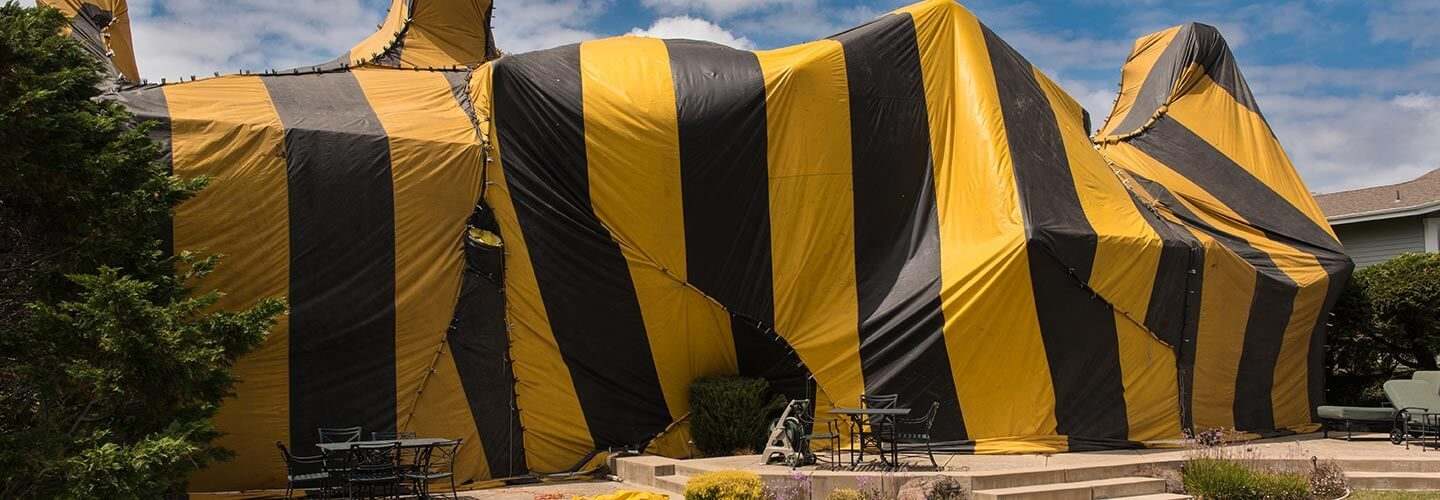Termite Fumigation Treatments in the Bay Area
Termite Fumigation
When & Why Should You Fumigate Your Home?
The most common question is “At what point do I need to consider fumigating my home for termites or beetles?”
- A home that is so heavily infested that locally treating the infestation becomes impractical cost-wise.
- When infestation is entirely in areas that cannot be accessed without the removal of existing structural elements
Essentially, if we can’t reach any part of the colony, or if there is so much infestation that even indirect methods would actually cost more than fumigation, fumigation becomes a viable option.

Fumigation Process
Day 1
- The fumigation crew arrives at the property between 8am and 2pm.
- While they prepare to place the tent over the structure, they quickly check the interior to ensure that all items that need to be removed or bagged in special Nylofume bags by the owner has been completed.
- They will also open the crawlspace and attic hatches at this time to allow for proper flow of the fumigant throughout the structure.
- At this point, the owner will need to vacate the structure during the entire fumigation process.
- The gas service to the home will be shut off and disconnected by the company that provides gas service to the structure, called a fume lock.
- The crew will then place the tarps over the home clipping and securing them in place and place fans inside of the structure to aid in moving around the fumigant.
- The exterior doors will have a special clam shell lock placed so that the owner or anyone else trying to gain access during the process cannot enter.
- Once the tent is sealed and in place, the crew foreman will release the fumigant Vikane gas which is spike with tear gas as a warning agent into the structure in a measured amount determined by cubic square footage measurement provided by inspector or crew foreman.
- After the fumigant has been released, the crew leaves the site.
Day 2
- After at least 18 hours of the fumigant cycling through the structure, the crew returns to the structure and begins the aeration process.
Day 3
- The crew arrives on the final day and begins the process of removing the tarps from the structure.
- After the tarps have been removed, the crew foreman goes through the structure with a special meter to measure for any remaining gas inside of the structure, at the crawlspace and attic hatches as well.
- If the meter measures at 5 parts per million or less, then the structure is deemed safe for re-entry as per State, Federal and EPA laws.
- A tag is posted by the fumigation company inside of the structure with their company information, the fumigant that was used and the date of the fumigation.
- A sign is posted at the exterior stating that the structure is safe for re-entry.
- Re-entry is usually obtained between 1pm to 5pm.
Notes
- The 3-day process is only valid for fumigation of the Western Drywood Termite and if the fumigation is started on a Monday, Tuesday, Wednesday or Thursday.
- Fumigations for Western Drywood Termites started on a Friday or Saturday, will be certified for re-entry the following Tuesday as the fumigation company is closed on Sunday.
- Fumigations for wood boring beetles is a 5-day process no matter which day of the week fumigation is started. It also requires twice the amount of Vikane Gas Fumigant.
